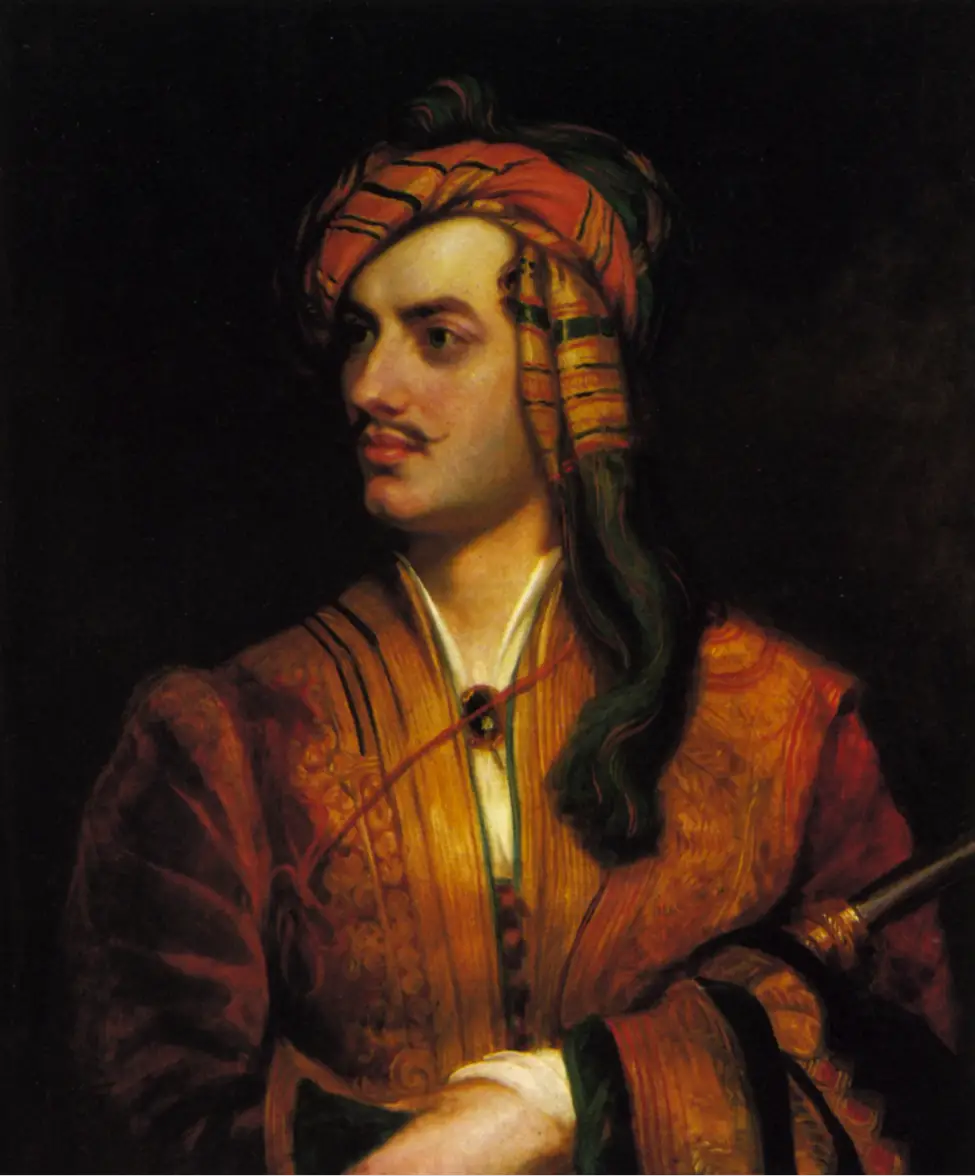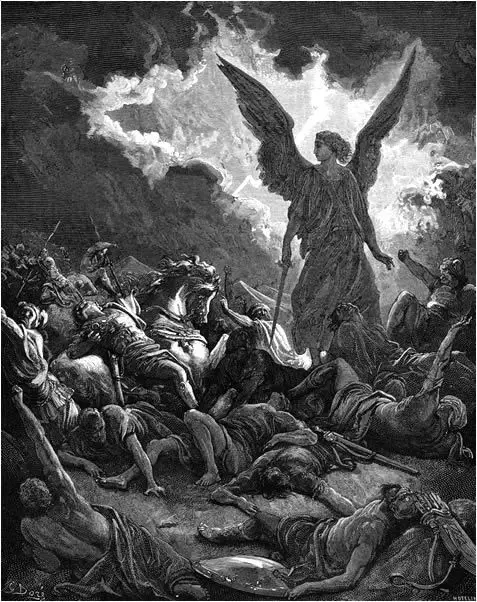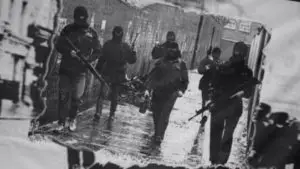
FULL POEM - SCROLL DOWN FOR LINE-BY-LINE ANALYSIS
Like the leaves of the forest when Summer is green,
That host with their banners at sunset were seen:
Like the leaves of the forest when Autumn hath blown,
That host on the morrow lay withered and strown.
For the Angel of Death spread his wings on the blast,
And breathed in the face of the foe as he passed;
And the eyes of the sleepers waxed deadly and chill,
And their hearts but once heaved, and for ever grew still!
And there lay the steed with his nostril all wide,
But through it there rolled not the breath of his pride;
And the foam of his gasping lay white on the turf,
And cold as the spray of the rock-beating surf.
And there lay the rider distorted and pale,
With the dew on his brow, and the rust on his mail:
And the tents were all silent, the banners alone,
The lances unlifted, the trumpet unblown.
And the widows of Ashur are loud in their wail,
And the idols are broke in the temple of Baal;
And the might of the Gentile, unsmote by the sword,
Hath melted like snow in the glance of the Lord!

LINE-BY-LINE ANALYSIS
STANZA 1
The Assyrian came down like the wolf on the fold,
The poem begins in media res with the ‘Assyrian’ army approaching the city of Jerusalem. This instantaneous leap into the action serves to draw in the reader and heighten the suspense of the poem to come. The simile ‘like the wolf on the fold’ immediately conveys the ‘Assyrian’ army as predatory and animalistic. From this description, Byron illustrates their strength at this moment.
And his cohorts were gleaming in purple and gold;
The imagery of ‘purple and gold’ connotes royalty and, when paired with the beauty and luxury of ‘gleaming’, an element of romance too.
And the sheen of their spears was like stars on the sea,
The mightiness of the ‘starts’ and the ‘sea’ signifies the power of the army. It’s also interesting to note how this power is emphasised by the interaction of the extra-terrestrial strength of the ‘stars’ and the planetary strength of the ‘sea’. Again, Byron portrays a spectacular image of shimmering light when describing the ‘sheen of their spears’.
When the blue wave rolls nightly on deep Galilee.
The imagery of the waves gives a calming, more peaceful tone to the poem. The reference to the Sea of Galilee helps build the setting around Jerusalem as well as connect the reader to the Biblical roots of the poem as Jesus lived in this area.
STANZA 2
Like the leaves of the forest when Summer is green,
Byron was a leading figure in the romantic movement of poetry and this elegant, romanticised description of the army reflects this. The pathetic fallacy of ‘summer’ signifies the strength of the army and the colour ‘green’ the life within them.
That host with their banners at sunset were seen:
Throughout literature, the ‘sunset’ is associated with beauty and romance but also with the transition from one day to another. The natural beauty here links to the previous line, but the ‘sunset’ also acts as a subtle transition in tone.
Like the leaves of the forest when Autumn hath blown,
The symbolism of the seasons is repeated and the change from ‘summer’ to ‘autumn’ is key. The strength and prowess that the ‘summer’ was a metaphor for are starting to shift towards the metaphorical weakness and bareness, perhaps death, of ‘winter’.
That host on the morrow lay withered and strown.
The ‘leaves of the forest’ that lush and ‘green’ in the ‘summer’ are now ‘withered and strown’ in the ‘autumn’. ‘Withered and strown’ describe the leaves as dry, shriveled, and scattered on the ground. This is a metaphor for the scattered dead bodies of the soldiers and heavily juxtaposes their life full, prowess signified by the ‘summer’ at the beginning of this stanza.
STANZA 3
For the Angel of Death spread his wings on the blast,
The ‘Angel of Death’ personifies the almighty power of God as, in the Bible account of The Destruction of Sennacherib, it was he who killed the Assyrian army. The supernatural image further emphasises the almighty powers at God’s disposal.
And breathed in the face of the foe as he passed;
Byron portrays the killing of the Assyrian army by the ‘Angel of Death’ in a very calm manner, at odds with both the strength of the army and of God. This is Byron tiptoeing between illustrating God’s brutality but also his serenity.
And the eyes of the sleepers waxed deadly and chill,
And their hearts but once heaved, and for ever grew still!
The last two lines narrate the death of the soldiers. Again, the description of them as ‘sleepers’ conceals the brutality of this massacre (even if it’s for the greater good) and removes the permanency of death. The alliterative h sounds of ‘hearts but once heaved’ have an effect of replicating the sound of someone gasping for breath and, in this case, life.
STANZA 4
And there lay the steed with his nostril all wide,
But through it there rolled not the breath of his pride;
And the foam of his gasping lay white on the turf,
And cold as the spray of the rock-beating surf.
STANZA 5
And there lay the rider distorted and pale,
With the dew on his brow, and the rust on his mail:
And the tents were all silent, the banners alone,
The lances unlifted, the trumpet unblown.
STANZA 6
And the widows of Ashur are loud in their wail,
And the idols are broke in the temple of Baal;
And the might of the Gentile, unsmote by the sword,
Hath melted like snow in the glance of the Lord!


